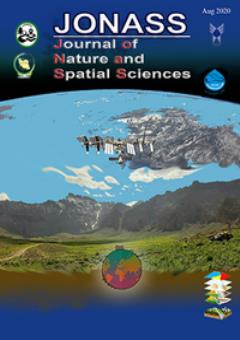Identification of safety hazards and risk assessment using the Hazid technique and designing strategic policies in the SWOT matrix
Subject Areas : Hazard
Seyed. Mahmoud Mir
1
![]() ,
Bizhan Maghsoudlou Kamaali
2
,
Bizhan Maghsoudlou Kamaali
2
![]() ,
Mojgan Shajari
3
,
Mojgan Shajari
3
![]()
1 - Department HSE, Maybod Branch, Islamic Azad University, Maybod, Iran
2 - Department of Environment , Faculty of Natural Resources , Islamic Azad University , Meybod Branch.
3 -
Keywords: Safety hazards Risk Assessment Ahvaz secondary schools HAZID technique Strategic policies,
Abstract :
Background and objective: The most important goal of this applied research was the analysis and evaluation of the existing situation parametric indicators of safety at the level of secondary schools in Ahvaz based on the pathology approach diagnosis, planning, Policymaking, and strategic-operational management. Which strategic components are more important in the field of safety risks for Ahvaz secondary schools?
Materials and methods: To determine the current status of safety indicators in Ahvaz schools, the HAZID technique was implemented. The analysis of external and internal factors affecting the status of safety indicators in Ahvaz secondary schools was done using a SWOT matrix.
Results and conclusion: In connection with the safety risks caused by the technical specifications of Ahvaz secondary school's buildings, the occurrence of serious accidents for students while passing through the street has the highest level of risk, and the risk level was equal to 9475/44 and unacceptable. Regarding the safety hazards caused by the characteristics and grounds of Ahvaz secondary schools, the destruction of school buildings due to non-compliance with architectural standards was the highest risk, and the risk level was equal to 2840/37 and unacceptable. Therefore, it can be acknowledged that the present applied research tries to adopt an approach active and preventive; due to the new perspective, the strategy-oriented approach can be of special importance and credibility in the national and international arenas.
AlKheder, S., Alzarari, A., & AlSaleh, H. (2023). Urban construction-based social risks assessment in hot arid countries with social network analysis. Habitat International, 131, 102730. https://doi.org/10.1016/j.habitatint.2022.102730
Bicalho, D., Santos, T. S. S., Slater, B., & Lima, T. M. (2021). Evaluation of quality indicators for management of the National School Feeding Program in Brazil: a systematic review. Ciência & Saúde Coletiva, 26, 3099-3110. https://doi.org/10.1590/1413-81232021268.03802020
Bradshaw, C. P., Cohen, J., Espelage, D. L., & Nation, M. (2021). Addressing school safety through comprehensive school climate approaches. School Psychology Review, 50(2-3), 221-236. https://doi.org/10.1080/2372966X.2021.1926321
Campos, P. (2020). Resilience, education, and architecture: The proactive and “educational” dimensions of the spaces of formation. International journal of disaster risk reduction, 43, 101391. https://doi.org/10.1016/j.ijdrr.2019.101391
Hesami Arani, M., Jaafarzadeh, N., Khaleghi Dehabadi, P., Mostafaii, G., Tazik, M., Karimi, Z., Etesam, A., & Mohammad zadeh, M. (2020). Health and safety hazards identification and risk assessment in the swimming pools using combined HAZID and ALARP. Environmental Health Engineering and Management Journal, 7(3), 151-160.
Hilbert, M. (2016). Big data for development: A review of promises and challenges. Development Policy Review, 34(1), 135-174. https://doi.org/10.1111/dpr.12142
Kim, K., Kang, H., & Kim, Y. (2015). Risk assessment for natural gas hydrate carriers: a hazard identification (HAZID) study. Energies, 8(4), 3142-3164. https://doi.org/10.3390/en8043142
Kour, R., Singh, A., & Ahire, N. (2020). An implementation study on Hazard Identification and Risk Assessment (HIRA) technique in the Critical Care Unit of a Tertiary Care Hospital. Indian Journal of Forensic Medicine & Toxicology, 14(4), 4018-4026.
Lindfors, E., & Teperi, A.-M. (2019). Incidents in schools-incident analysis in developing safety management. Advances in Human Factors in Training, Education, and Learning Sciences: Proceedings of the AHFE 2018 International Conference on Human Factors in Training, Education, and Learning Sciences, July 21-25, 2018, Loews Sapphire Falls Resort at Universal Studios, Orlando, Florida, USA 9,
Luetz, J. M., & Sultana, N. (2019). Disaster risk reduction begins at school: Research in Bangladesh highlights education as a key success factor for building disaster-ready and resilient communities—A manifesto for mainstreaming disaster risk education. Addressing the challenges in communicating climate change across various audiences, 617-646.
McAllister, M., & Flynn, T. (2016). The capabilities of nurse educators (CONE) questionnaire: Development and evaluation. Nurse Education Today, 39, 122-127. https://doi.org/10.1016/j.nedt.2016.01.022
Nyakundi, Z. O. (2012). Implementation of safety standards and guidelines in public secondary schools in Marani District, Kisii County, Kenya. Kenyatta university.
Pazzi, V., Morelli, S., Pratesi, F., Sodi, T., Valori, L., Gambacciani, L., & Casagli, N. (2016). Assessing the safety of schools affected by geo-hydrologic hazards: the geohazard safety classification (GSC). International journal of disaster risk reduction, 15, 80-93. https://doi.org/10.1016/j.ijdrr.2015.11.006
Ranasinghe, U., Jefferies, M., Davis, P., & Pillay, M. (2020). Resilience engineering indicators and safety management: A systematic review. Safety and Health at Work, 11(2), 127-135. https://doi.org/10.1016/j.shaw.2020.03.009
Sambasivam, S., Karuppiah, K., Subramaniam, K., Praveena, S., & Abidin, E. (2017). Potential safety risks in schools: Ensuring the safety of our precious ones. Annals of Tropical Medicine and Public Health, 10(3). DOI:10.4103/ATMPH.ATMPH_81_17
Schmidt, C. (2020). Why risk management frameworks fail to prevent wrongdoing. The Learning Organization, 27(2), 133-145. https://doi.org/10.1108/TLO-10-2019-0150
Seyedin, H., Dowlati, M., Moslehi, S., & Sakhaei, F. S. (2020). Health, safety, and education measures for fire in schools: A review article. Journal of education and health promotion, 9(1), 121 doi: 10.4103/jeep.jehp_665_19
Vallinkoski, K. K., & Koirikivi, P.-M. (2020). Enhancing Finnish basic education schools’ safety culture through comprehensive safety and security management. Nordic journal of studies in educational policy, 6(2), 103-115. https://doi.org/10.1080/20020317.2020.1720069
Vilaça, T., Darlington, E., Velasco, M. J. M., Martinis, O., & Masson, J. (2019). SHE School Manual 2.0. A methodological guidebook to become a health-promoting school. Schools for Health in Europe Network Foundation (SHE).
Yu, C.-Y. (2015). How differences in roadways affect school travel safety. Journal of the American Planning Association, 81(3), 203-220. https://doi.org/10.1080/01944363.2015.1080599
Yu, C.-Y., & Zhu, X. (2016). Planning for safe schools: Impacts of school siting and surrounding environments on traffic safety. Journal of Planning Education and Research, 36(4), 476-486. https://doi.org/10.1177/0739456X15616460
Zaplluzha, S., & Shahini, M. (2016). Gender differences in the evaluation of school safety indicators according to adolescents in higher secondary schools in Prizren. International Journal of Adolescence and Youth, 21(1), 27-33. https://doi.org/10.1080/02673843.2015.1027715


